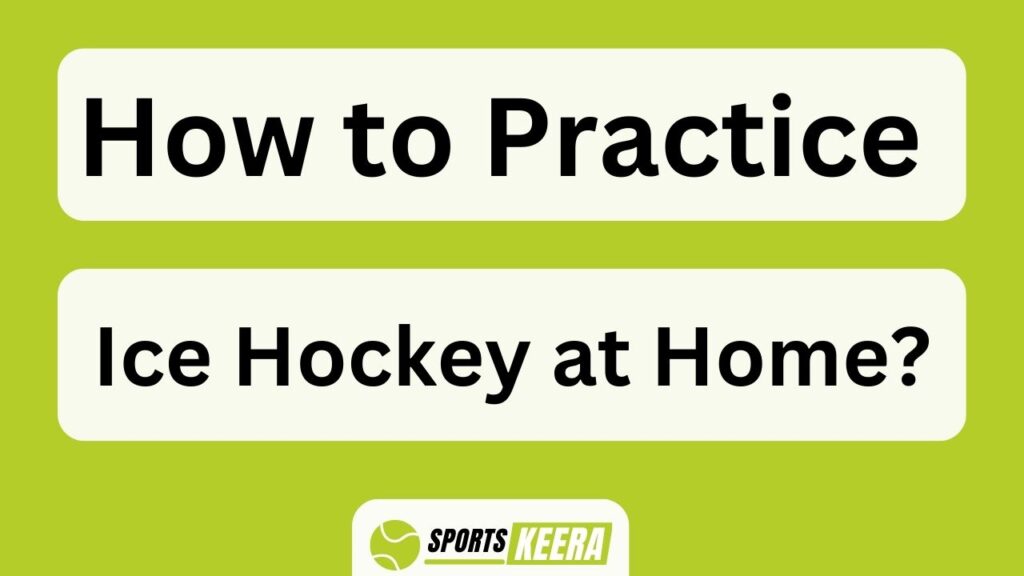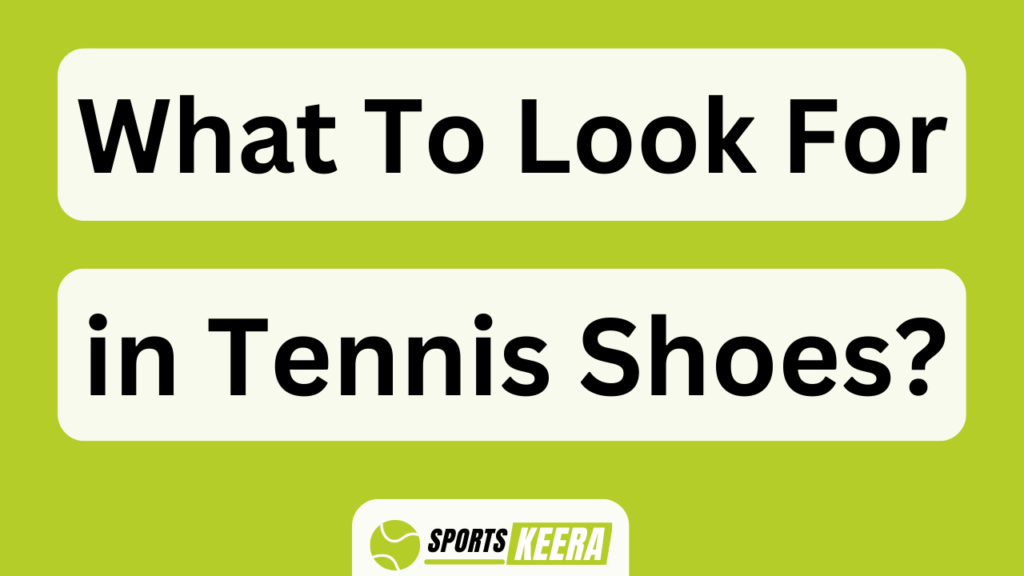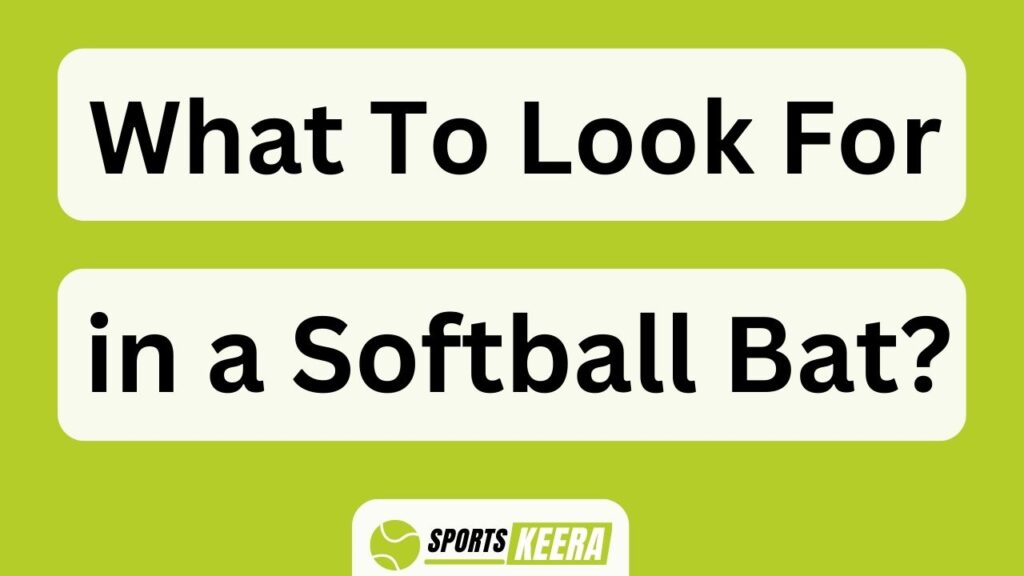Are you ready to take your ice hockey skills to the next level?
Well, get ready because we’re about to show you how to become a hockey superstar without ever leaving the comfort of your own home! That’s right, folks, with our expert tips and tricks, you’ll be stickhandling like a pro, shooting with pinpoint accuracy, and dominating the ice in no time.How To Practice Ice Hockey At Home?
We’ve got a whole arsenal of drills and exercises designed specifically for at-home practice that will improve your conditioning, balance, and core stability. And don’t worry about missing out on skating practice – we’ve got off-ice drills that will have you gliding across the rink in no time.
Plus, we’ll teach you how to analyze game footage like a pro and develop those mental skills that separate the best from the rest.
So grab your gear and get ready to unleash your inner hockey beast because it’s time to hit the ice…right from home!
Key Takeaways:How To Practice Ice Hockey At Home?
- Off-ice drills and exercises can improve ice hockey skills at home.
- Stickhandling drills with a tennis ball can enhance hand-eye coordination and reflexes.
- Shooting accuracy exercises, such as target practice and shooting at a moving target, can improve precision.
- Mental skills training, such as visualization and mindfulness exercises, can enhance focus and concentration.
Stickhandling Drills
To improve your stickhandling skills, you’ll want to practice these drills at home. Stickhandling is a fundamental skill in ice hockey that requires precision and control.
One effective drill involves using a tennis ball to enhance your hand-eye coordination and quick reflexes. Start by standing in front of a wall and repeatedly bouncing the tennis ball off it with your stick, using different angles and speeds to challenge yourself.
Another technique is the figure-eight drill, where you weave the ball through an imaginary figure-eight pattern on the ground using only your stick. This helps improve your agility and puck control.
By consistently practicing these tennis ball tricks and stickhandling techniques, you’ll develop better control over the puck during games.
Now let’s move on to shooting accuracy exercises…
Shooting Accuracy Exercises
Improve your aim by setting up a target in your backyard and challenge yourself to hit the net with at least 70% accuracy, a statistic that showcases the importance of shooting precision in ice hockey. To enhance your shooting technique and power, it’s crucial to practice regularly. Here are some effective shooting accuracy exercises:
- Target Practice: Set up a target on the net to improve your precision. Aim for specific areas such as the corners or top shelf.
- Moving Target: Use a moving target or have someone pass the puck while you shoot. This simulates game-like situations and helps refine your timing and accuracy.
- One-Timers: Practice one-timers from different positions on the ice, focusing on quick releases and accurate shots.
By incorporating these exercises into your training routine, you can develop better shooting skills and increase your scoring potential on the ice. Transitioning into conditioning workouts, it’s essential to build strength and endurance to excel in ice hockey without compromising speed or agility.
Conditioning Workouts
Get ready to push your limits and sweat it out with some intense conditioning workouts that’ll have you feeling like a pro athlete on the ice.
Conditioning workouts are essential for building endurance, strength, and speed in ice hockey. Here are three key conditioning exercises to incorporate into your at-home training routine:
- Interval sprints: Set up markers in your backyard or driveway and perform short bursts of sprinting followed by brief rest periods. This simulates the fast-paced nature of the game and improves your cardiovascular fitness.
- Plyometric exercises: Incorporate explosive movements like box jumps, burpees, and squat jumps to enhance power and agility on the ice.
- Mental skills training: Ice hockey requires mental toughness as well as physical prowess. Use visualization techniques, meditation, or mindfulness exercises to improve focus and concentration during games.
Now let’s transition into the next section about balance and core stability exercises that are crucial for mastering those precise skating maneuvers on the ice.
Balance and Core Stability Exercises
When it comes to improving our balance and core stability for ice hockey, there are several key exercises that can make a difference.
One effective method is using a balance board or Bosu ball to challenge our stability and proprioception.
Additionally, incorporating core exercises such as planks, Russian twists, and bicycle crunches can help strengthen the muscles in our midsection that are crucial for generating power on the ice.
Lastly, practicing yoga or Pilates workouts can enhance flexibility and stability, further enhancing our performance on the rink.
Using a balance board or Bosu ball for balance training
Find yourself floating on the edge of grace as you glide effortlessly across the ice, mastering your balance with the help of a balance board or Bosu ball.
These tools are invaluable for improving your stability and core strength, two essential components for success in ice hockey. Using a balance board not only helps to enhance your proprioception and body awareness but also strengthens the muscles responsible for maintaining balance.
By incorporating exercises like single-leg squats or lunges onto a Bosu ball, you can challenge your stability even further. Transitioning from using these tools to core exercises like planks, Russian twists, and bicycle crunches will allow you to develop a solid foundation of strength and stability that is crucial for excelling in ice hockey without losing momentum.
Core exercises like planks, Russian twists, and bicycle crunches
By incorporating core exercises like planks, Russian twists, and bicycle crunches into our training routine, we’ll be on our way to developing a rock-solid foundation of strength and stability that will greatly benefit our performance on the ice.
Planks are an excellent exercise for building core strength, and there are various plank variations we can try to target different muscle groups.
Russian twists engage the oblique muscles and help improve rotational power, which is essential for quick turns and pivots during gameplay.
Bicycle crunches work the entire abdominal region while also engaging the hip flexors.
To further challenge ourselves, we can incorporate medicine ball exercises into these core workouts. Medicine ball throws or twists add resistance and require us to stabilize our core while performing dynamic movements.
By focusing on strengthening our core through these exercises, we’ll enhance our balance on the ice and set ourselves up for success in other areas of our training routine.
Now let’s transition into discussing yoga or pilates workouts to improve flexibility and stability without losing momentum in our at-home ice hockey practice sessions.
Yoga or Pilates workouts to improve flexibility and stability
Now that we’ve covered core exercises to strengthen our midsection, let’s delve into another important aspect of at-home training for ice hockey: yoga or Pilates workouts. These practices offer a multitude of benefits for hockey players, including improved flexibility and stability.
By incorporating yoga or Pilates into our routines, we can enhance our balance on the ice and reduce the risk of injuries. Some of the best poses for hockey players include Warrior 1 and 2, Downward Facing Dog, and Bridge Pose. These poses target key areas such as the hips, hamstrings, and shoulders, helping us maintain proper form and movement during gameplay.
As we transition into off-ice skating drills in the next section, it’s essential to remember that a well-rounded training regimen encompasses both strength-building exercises like planks as well as flexibility-enhancing practices like yoga or Pilates.
Off-Ice Skating Drills
To improve your skating skills off the ice, lace up your sneakers and get ready to push yourself with some challenging drills. Off-ice conditioning is crucial for ice hockey players to maintain their strength and agility. By incorporating specific exercises into your training routine, you can enhance your skating abilities and overall performance on the ice.
One effective drill is the “Quick Feet” exercise, where you perform quick lateral movements in a small area, mimicking the motions used during skating. Another useful drill is the “Jump Squat,” which helps develop explosive power in your legs, essential for generating speed on the ice.
Incorporating stickhandling techniques is also important for improving your on-ice performance. Practicing with a tennis ball allows you to focus on accuracy and control. Start by dribbling the ball between cones placed at varying distances apart to simulate real game situations.
Transitioning into stickhandling and shooting drills with a tennis ball will further refine your skills without compromising technique or form.
Stickhandling and Shooting Drills with a Tennis Ball
When it comes to improving stickhandling skills off the ice, using a tennis ball on a smooth surface is an excellent option. This drill allows us to practice our hand-eye coordination, quick reflexes, and puck control in a confined space.
Additionally, shooting at targets with a tennis ball helps enhance our accuracy and precision by challenging us to hit specific spots consistently. By incorporating these tennis ball drills into our off-ice routine, we can effectively simulate real game situations and develop the necessary skills to excel on the ice.
Stickhandling with a tennis ball on a smooth surface
Start by grabbing a tennis ball and getting ready to improve your stickhandling skills on a smooth surface! Here are three ways to enhance your stickhandling using a tennis ball:
- Using a rebounder for stickhandling: Set up a rebounder against the wall and practice controlling the tennis ball as it bounces back. This drill will help you develop quick reflexes and hand-eye coordination.
- Tennis ball juggling for hand-eye coordination: Start by tossing the tennis ball in the air and catching it with your stick. Gradually increase the difficulty by adding more tosses or incorporating different stickhandling moves while juggling. This exercise will enhance your control and agility.
- Stickhandling on different surfaces: Experiment with practicing on various smooth surfaces such as hardwood floors, tiles, or synthetic ice. Each surface will challenge your control differently, helping you adapt to different playing conditions.
By mastering these stickhandling drills with a tennis ball, you’ll be one step closer to improving your shooting accuracy at targets.
Shooting at targets with a tennis ball
Improve your accuracy and impress your friends by shooting at targets with a tennis ball. Did you know that hitting the bullseye consistently can increase your scoring percentage by up to 25%? To master this skill, it’s essential to focus on proper shooting technique.
Start by positioning yourself in front of the target, ensuring a strong stance with your feet shoulder-width apart. As you prepare to shoot, keep your eyes fixed on the target and maintain a firm grip on the stick. When releasing the shot, remember to transfer your weight from back to front foot while generating power through your hips and core.
Practice different shooting angles and release points to enhance versatility in game situations. Incorporating tennis ball drills into your off-ice routine will further develop these skills seamlessly.
Incorporating tennis ball drills into your off-ice routine
To further enhance our off-ice training, let’s delve into the world of incorporating tennis ball drills into our routine. Tennis ball dribbling is an excellent way to improve stickhandling skills and hand-eye coordination.
Set up an agility ladder and navigate through it while controlling a tennis ball with your hockey stick. This drill will help sharpen your footwork and quickness on the ice.
Additionally, you can practice passing and receiving by bouncing the tennis ball off a wall or rebounder, simulating game-like situations.
Finally, challenge yourself by juggling multiple tennis balls with your stick to improve hand dexterity and multitasking abilities. These dynamic exercises will undoubtedly boost your overall performance on the ice.
Now that we’ve covered these essential drills, let’s move on to another crucial aspect of improving our game: watching and analyzing game footage.
Watching and Analyzing Game Footage
When it comes to improving our ice hockey skills, one important tool at our disposal is watching and analyzing game footage.
By studying professional players and analyzing their techniques, we can gain valuable insights into the game and learn new strategies to implement in our own play.
Additionally, watching our own game footage allows us to identify areas for improvement and make necessary adjustments to our gameplay.
Lastly, online instructional videos and tutorials provide a wealth of knowledge and guidance, allowing us to learn from experts in the field and further enhance our skills on the ice.
Studying professional players and analyzing their techniques
Watch professional players closely and analyze their techniques to gain valuable insights on how to improve your own skills in ice hockey. By studying shooting techniques and analyzing defensive strategies, you can enhance your overall gameplay.
To better understand the intricacies of different techniques, let’s take a closer look at some professional players and their skills:
| Player | Shooting Technique | Defensive Strategy |
|---|---|---|
| Sidney Crosby | Quick release and accuracy | Stick positioning |
| Alex Ovechkin | Powerful slapshot | Physical play |
| Connor McDavid | Deceptive puck handling | Speed and agility |
Analyzing these players’ performances not only provides inspiration but also allows for a deeper understanding of the game. By incorporating these insights into our own practice routines, we can refine our skills and elevate our performance on the ice.
In the next section, we will discuss how watching our own game footage helps us identify areas for improvement without duplicating steps.
Watching your own game footage to identify areas for improvement
Take a moment to review your own game footage and discover key areas for improvement in order to elevate your skills and performance on the ice. Watching game highlights allows us to analyze our gameplay objectively, identifying strengths and weaknesses. By seeking feedback from coaches, we can gain valuable insights and guidance on how to enhance our technique, decision-making, and overall understanding of the game.
1) Pay attention to positioning: Analyze how well you maintained proper positioning throughout the game. Evaluate if there were instances where you could’ve been better positioned to make a play or defend against an opponent.
2) Assess decision-making: Review your choices during critical moments of the game. Evaluate whether you made the right passes, shots, or defensive moves based on the situation at hand.
3) Study skating technique: Observe your skating form closely. Look for areas where you can improve efficiency, speed, agility, and balance.
By watching our own game footage and seeking feedback from coaches, we can pinpoint specific areas for improvement that’ll contribute to our growth as ice hockey players. Transitioning into learning from instructional videos and tutorials online expands upon these opportunities for development without limiting ourselves to just analyzing our own gameplay.
Learning from instructional videos and tutorials online
Immerse yourself in a world of expert guidance and knowledge by exploring a variety of instructional videos and tutorials online. This will allow you to expand your skills and understanding of the game beyond what you thought possible.
Learning from online coaches through these resources provides invaluable insights into techniques, strategies, and drills specific to ice hockey. These videos break down complex plays step-by-step, giving you a detailed understanding of how to execute them effectively.
Additionally, joining virtual training classes offers an interactive learning experience where you can receive personalized feedback from experienced instructors.
By actively engaging with these online resources, you can enhance your technical proficiency and gain a competitive edge on the ice.
Transitioning into the subsequent section about ‘mental skills training,’ it’s essential to develop not only physical capabilities but also mental resilience for peak performance in ice hockey.
Mental Skills Training
Imagine yourself on the ice, visualizing every play and decision you make, improving your mental skills for ice hockey right in the comfort of your own home. Mental skills training is a crucial aspect of becoming a successful ice hockey player, and it can be effectively practiced off the ice. Visualization techniques help enhance your decision-making abilities by mentally rehearsing game situations. Close your eyes and imagine yourself making accurate passes, taking powerful shots, and outmaneuvering opponents. Additionally, incorporating breathing exercises into your routine can help calm nerves and improve focus during high-pressure moments in a game. Take deep breaths in through your nose, hold for a few seconds, then exhale slowly through your mouth. These techniques not only strengthen your mental resilience but also improve overall performance on the ice.
As we transition to the subsequent section about virtual training programs and apps…
Virtual Training Programs and Apps
Get ready to dive into the world of virtual training programs and apps, where you can enhance your skills like a hockey player sharpening their skates before hitting the ice.
Virtual coaching has revolutionized the way athletes train, bringing expert guidance right into your own home. With interactive training programs, you can receive personalized feedback and instruction from professional coaches, helping you improve your technique, speed, and agility. These programs often include video analysis tools that allow you to compare your performance to that of top players, helping you identify areas for improvement.
Additionally, apps provide access to drills and workouts specifically designed for hockey players, ensuring that you stay in peak condition even when away from the rink.
Now that we’ve explored virtual training options, let’s move on to creating a training schedule and setting goals to maximize our progress.
Creating a Training Schedule and Setting Goals
Prepare to transform your training routine and unleash your full potential with a carefully crafted schedule that’ll ignite your passion and drive towards achieving your goals.
Creating a training journal is an essential part of this process, as it allows you to track your progress and identify areas for improvement.
Start by setting realistic goals that are specific, measurable, attainable, relevant, and time-bound (SMART). Whether it’s improving your stick handling skills or increasing your speed on the ice, break down these goals into smaller milestones that can be achieved within a set timeframe. This’ll help you stay motivated and focused throughout your training.
Remember to be flexible with your schedule and adjust it as needed to accommodate any changes or unforeseen circumstances.
By creating a structured training plan and setting achievable goals, you’ll be well on your way to becoming the best hockey player you can be.
Frequently Asked Questions
What are the benefits of stickhandling drills?
Stickhandling drills are essential for ice hockey players. They improve hand-eye coordination, puck control, and agility. By mastering stickhandling techniques, we gain a competitive edge on the ice and enhance our overall performance in the game.
How can shooting accuracy exercises improve my scoring ability?
Improving scoring ability requires proper shooting technique and power. To enhance accuracy, focus on body positioning, weight transfer, and follow-through. Strengthening core muscles and practicing wrist shots will increase shooting power and velocity.
What are some conditioning workouts specifically designed for ice hockey players?
Conditioning workouts for ice hockey players are crucial for off-ice training. Incorporating plyometric exercises like box jumps and agility drills such as ladder runs can enhance speed, power, and endurance, improving overall performance on the ice.
How can balance and core stability exercises enhance my on-ice performance?
Balance and core stability exercises are essential for enhancing on-ice performance. These exercises improve overall body control, agility, and power, resulting in better skating skills and preventing injuries. Incorporating off-ice skating drills further enhances these benefits.
Are there any off-ice skating drills that can help improve my skating technique?
Off-ice agility drills and speed and quickness exercises are essential for improving skating technique. One interesting statistic shows that athletes who regularly engage in off-ice training see a 12% increase in on-ice performance.
Conclusion
In conclusion, practicing ice hockey at home is crucial for improving our skills and performance on the ice. By incorporating stickhandling drills, shooting accuracy exercises, conditioning workouts, balance and core stability exercises, off-ice skating drills, watching game footage, mental skills training, and virtual training programs into our routine, we can become stronger and more proficient players.
Just as a sculptor molds clay to create a masterpiece, we must dedicate ourselves to shaping our abilities through disciplined practice. So lace up your skates and get ready to elevate your game to new heights!




